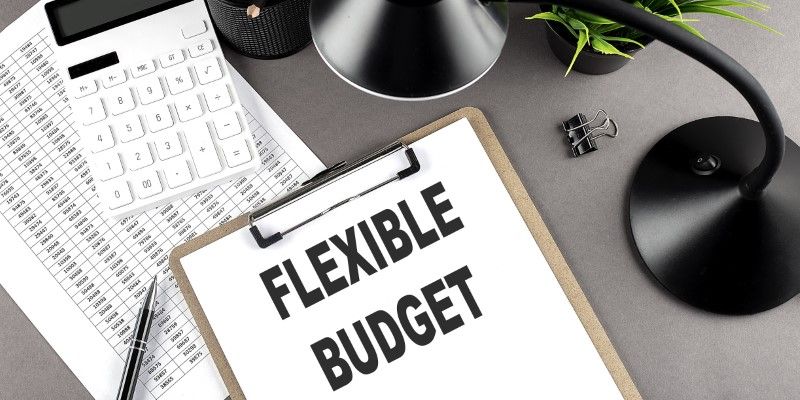Balancing short-term spending with long-term financial goals is a crucial aspect of personal finance that affects everyone, regardless of income level. It requires a strategic approach to managing daily expenses while preparing for future financial stability. This article will explain the differences between short-term and long-term financial objectives, the importance of budgeting, practical strategies for achieving balance, and tips for assessing and adjusting your financial plan over time.
Understanding Short-Term Vs. Long-Term Financial Objectives
Short-term financial objectives, achievable within a year, include creating an emergency fund, prioritizing debt repayment, and saving for planned purchases. Addressing these goals enhances economic stability and prepares individuals for unexpected expenses and future opportunities.
In contrast, long-term financial objectives extend over several years and encompass broader aspirations. These goals often include retirement planning to secure a comfortable future, saving for a down payment on a home, and funding education for children’s college expenses, all of which contribute to long-term financial stability and success.
Understanding the differences between these objectives is essential for effective financial planning. While short-term goals often require immediate attention, long-term goals necessitate sustained effort and strategic thinking.

The Importance Of Budgeting For Financial Health
Budgeting serves as a foundation for achieving both short-term and long-term financial goals. A well-structured budget provides insight into income and expenses, allowing individuals to allocate funds appropriately. Here are some key reasons why budgeting is vital:
Tracking Income And Expenses
Budgeting helps individuals understand where their money goes each month. People can identify areas where they may be overspending by categorizing expenses such as housing, food, transportation, and entertainment. This awareness is crucial for making informed decisions about where to cut back.
Setting Priorities
A budget forces individuals to prioritize their spending. For instance, if someone is saving for a new car, they may limit dining out or entertainment expenses. This conscious decision-making aligns short-term spending with long-term goals, creating a more balanced financial approach.
Reducing Financial Stress
Financial uncertainty can lead to stress and anxiety. A solid budget provides a clear roadmap for managing finances, reducing the likelihood of overspending and increasing confidence in one's financial situation. Knowing that there is a plan in place can alleviate concerns about unexpected expenses or future economic stability.

Strategies For Balancing Immediate Needs With Future Goals
Achieving a balance between short-term spending and long-term financial objectives requires thoughtful strategies. Here are some practical approaches:
Establish An Emergency Fund
Before delving into long-term savings, building an emergency fund is crucial. This fund is a financial safety net, covering unexpected expenses without derailing long-term goals. A good rule of thumb is to save three to six months' worth of living expenses in an easily accessible account. This way, individuals can address short-term financial surprises while focusing on long-term objectives.
Create A Flexible Budget
While sticking to a budget is essential, flexibility is equally important. Life circumstances can change, affecting income and expenses. A flexible budget allows for adjustments while still keeping long-term goals in mind. For instance, if an unexpected medical expense arises, individuals may need to temporarily adjust their savings contributions without abandoning their overall financial plan.

Prioritize Savings And Investments
To effectively balance short-term needs with long-term goals, prioritize savings and investments. Allocate a portion of your income to both categories. Consider using the "50/30/20 rule," which suggests allocating 50% of revenue to needs, 30% to wants, and 20% to savings and debt repayment. This framework ensures immediate needs are met while fostering a savings habit.
Consider Delayed Gratification
Practising delayed gratification can significantly enhance financial health. For example, consider waiting a month instead of impulsively buying the latest gadget to see if the desire persists. This approach helps save money and reinforces that not all immediate wants must be fulfilled simultaneously.
Utilize Automated Savings Tools
Automation can simplify the process of saving for both short-term and long-term goals. Set up automatic transfers from your checking account to savings or investment accounts. By automating savings, individuals can ensure that they consistently allocate funds toward their goals without actively thinking about it.

Assessing And Adjusting Your Financial Plan
Regularly assessing and adjusting your financial plan balances short-term spending and long-term objectives. Here are some steps to consider:
Review Your Budget Periodically
Life changes can impact income and expenses, so it's essential to review your budget regularly. Set aside time each month or quarter to analyze your financial situation. Look for trends in spending and adjust your budget as necessary to ensure it remains aligned with your goals.
Set SMART Goals
When establishing financial objectives, consider using the SMART criteria—Specific, Measurable, Achievable, Relevant, and Time-bound. This approach helps create clear and actionable goals. For instance, instead of saying, "I want to save money," a SMART goal might be, "I want to save $5,000 for a vacation by December of next year." This specificity helps maintain focus and motivation.
Track Progress Towards Goals
Keeping track of progress is essential for motivation. Use tools like spreadsheets or budgeting apps to monitor savings and investments. Celebrate small milestones to maintain motivation and reinforce positive financial habits.
Seek Professional Guidance
If financial planning feels overwhelming, consider seeking assistance from a financial advisor. These professionals can help assess your financial situation, set realistic goals, and develop a tailored plan to balance immediate needs with long-term aspirations. They can provide insights that may take time to be apparent, helping you make informed decisions about your financial future.
Conclusion
Balancing short-term spending with long-term financial goals is a dynamic process that requires careful planning, regular assessment, and adaptability. Individuals can achieve a more harmonious financial life by understanding the differences between short-term and long-term objectives, emphasizing the importance of budgeting, and employing practical strategies.
Whether building an emergency fund, practising delayed gratification, or regularly reviewing one's financial plan, the path to financial health is paved with conscious decisions prioritizing immediate needs and future aspirations. Individuals can work toward a secure and fulfilling financial future by fostering this balance.





